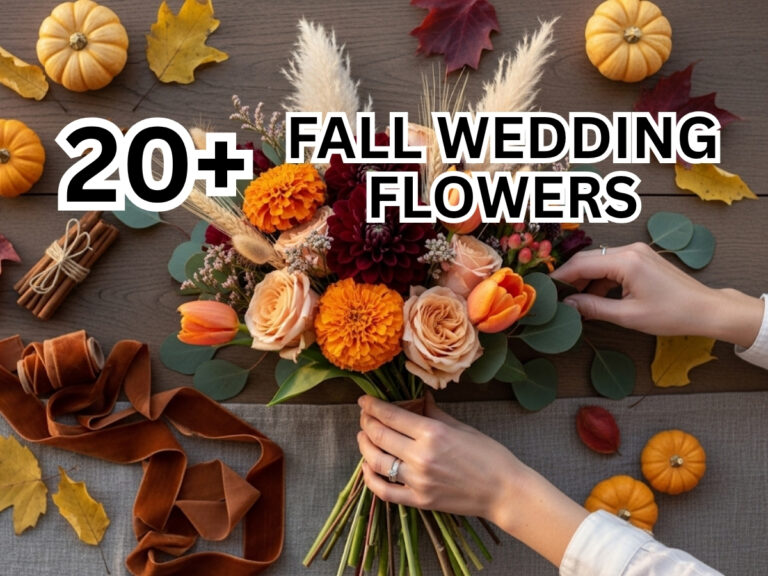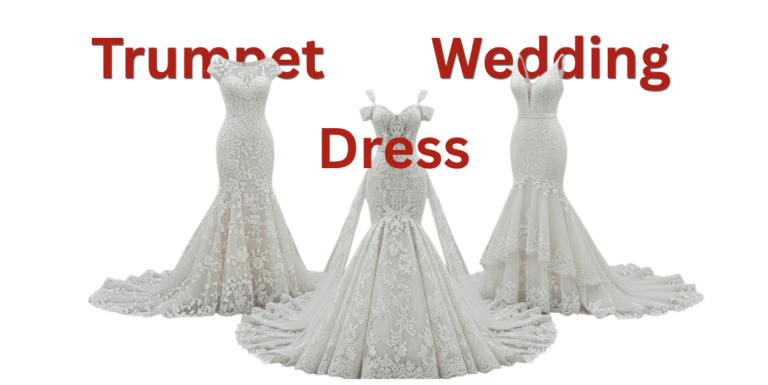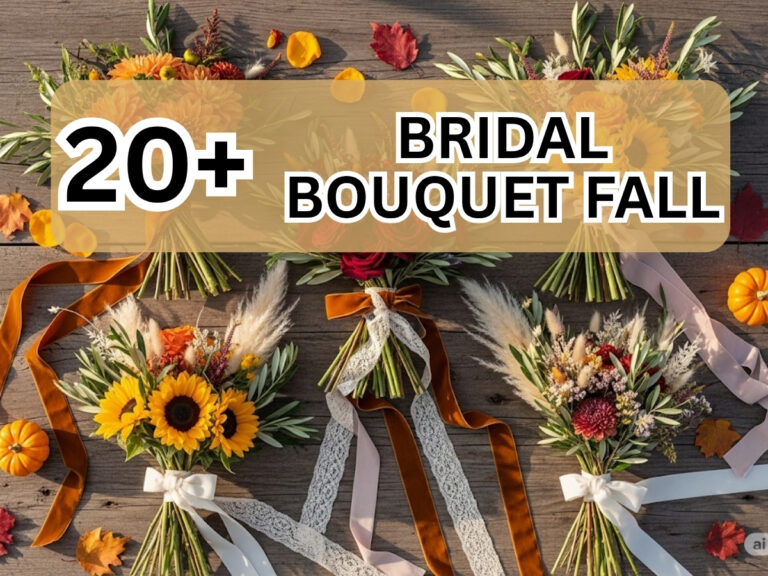How to Bustle a Wedding Dress: Types, Tips, and Step-by-Step Guide
Every bride dreams of looking elegant and moving gracefully on her wedding day. But long wedding dresses with trains can make walking, dancing, and sitting challenging. This is where a wedding dress bustle comes in. Bustling your gown lifts and secures the train, allowing you to enjoy your celebration without stepping on fabric or worrying about wrinkles. In this guide, you’ll learn about the different types of bustles, how to bustle your wedding dress, and expert tips to stay comfortable and stylish throughout the day.
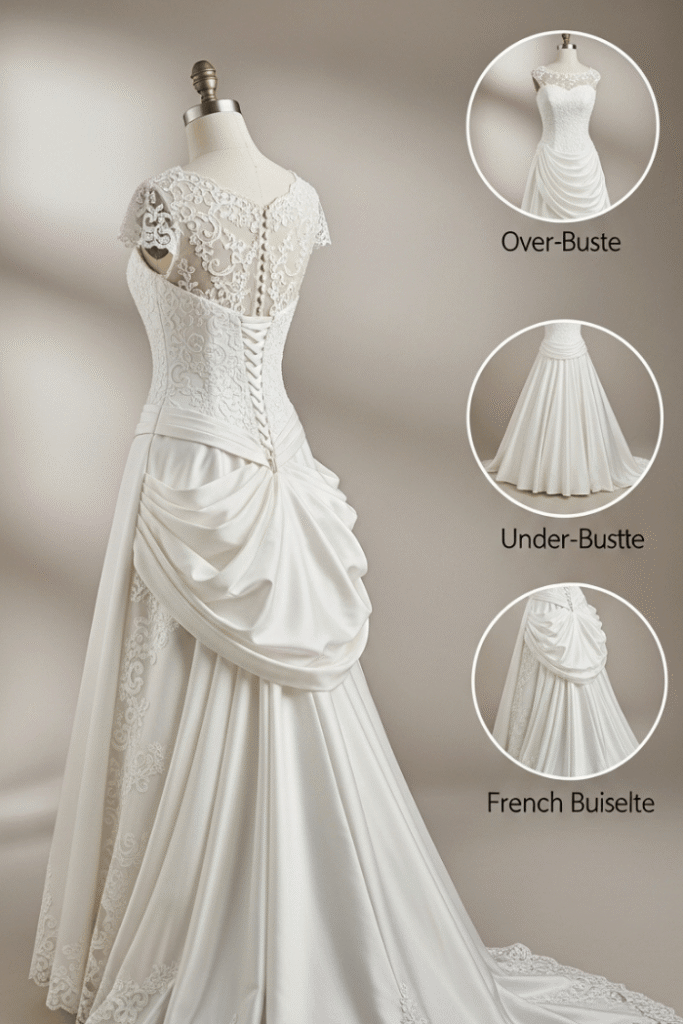
Table of Contents
What Is a Wedding Dress Bustle?
A wedding bustle is a method used to lift and secure the train of a bridal gown. Bustling a dress allows brides to move freely during the ceremony, reception, and first dance. Bustles prevent the train from dragging on the floor, which protects fabrics from dirt and wear. Brides often rely on seamstresses, family members, or bridesmaids to attach the bustle, ensuring the gown remains elegant and comfortable.
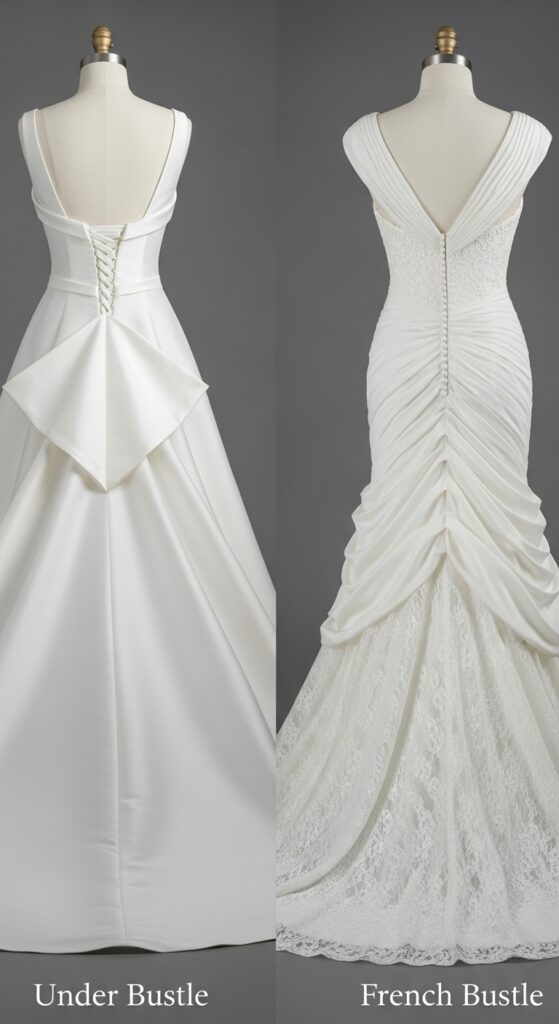
Types of Bustles for Wedding Dresses
Wedding dresses have different silhouettes, fabrics, and train lengths, so choosing the right bustle style is essential. Below are the most common bustle wedding dress types:
Over Bustle (American Bustle)
The over bustle lifts the train over the skirt, creating a neat fold on top of the gown. It works well for lightweight fabrics and layered skirts, allowing brides to move easily while keeping the train visible for photographs. Many brides choose this bustle style for A-line wedding dresses or ball gown wedding dresses with chapel or sweep trains.
Under Bustle
The under bustle tucks the train beneath the gown, offering strong support for heavy fabrics and structured skirts. It is ideal for ball gowns, cathedral train wedding dresses, and dresses with long, flowing trains. This style ensures the train remains lifted without altering the gown’s natural silhouette.
French Bustle (French Bustle Wedding Gown)
The French bustle uses multiple points along the train to lift and pin it securely to the skirt. This bustle type is perfect for formal gowns with intricate details, lace overlays, or layered fabrics. By distributing weight evenly, it keeps the train balanced and elegant throughout the day.
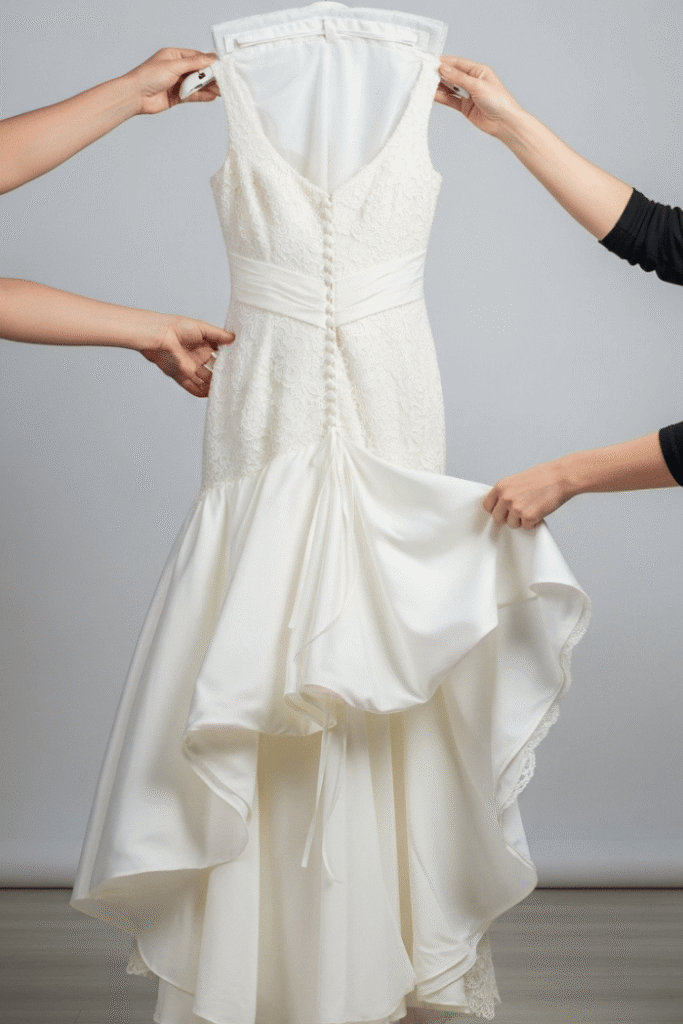
How to Bustle a Wedding Dress
Bustling your gown requires preparation and a few essential tools, including loops, ribbons, hooks, buttons, and needles.
Step 1: Examine the Train
Identify your train type—sweep, chapel, cathedral, or court—and determine where bustle points should be placed.
Step 2: Choose a Bustle Style
Decide between over bustle, under bustle, or French bustle based on dress fabric, weight, and silhouette.
Step 3: Mark Bustle Points
Use safety pins or tailor tacks to mark where loops or ribbons will attach. Symmetry is essential for a balanced lift.
Step 4: Attach the Bustle
Secure the loops, ribbons, or hooks at the marked points using a needle and thread or have a professional seamstress do it. Ensure the train lifts evenly and remains stable.
Step 5: Test Movement
Walk, sit, and dance in your gown to ensure comfort. Assign bridesmaids or family members to help adjust the bustle if needed.
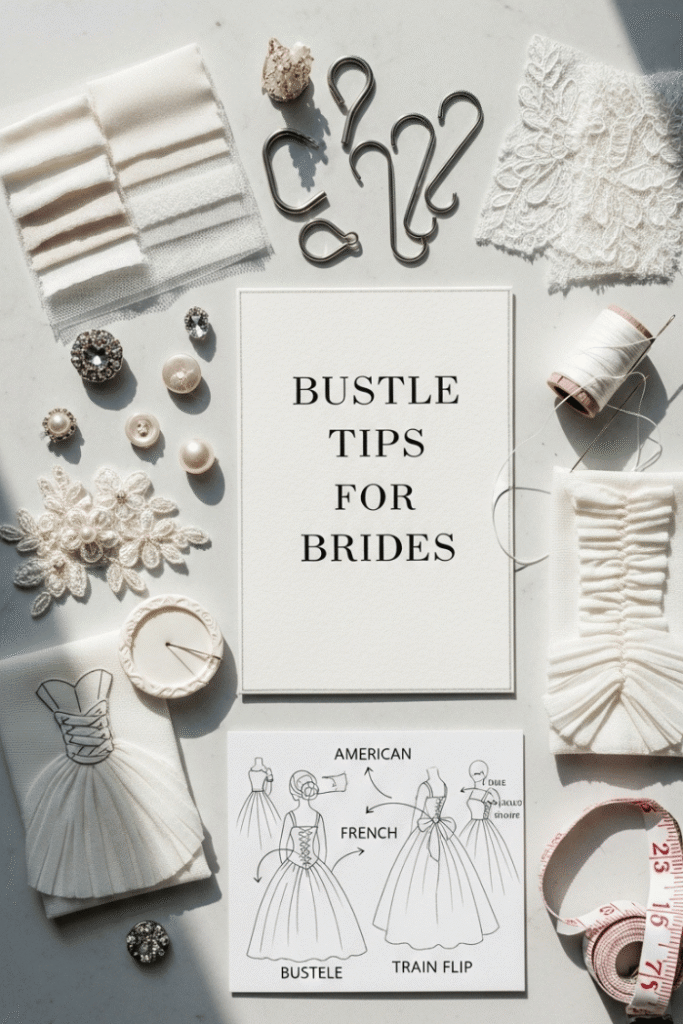
Expert Bustle Tips for Brides
- Secure All Loops: Loops and ribbons should be firmly attached to avoid slipping during movement.
- Practice Before the Wedding: Test the bustle at dress fittings to get comfortable with walking and dancing.
- Professional Assistance: A seamstress can add discreet buttons or hooks for easier bustling.
- Coordinate with Helpers: Assign bridesmaids or family members to manage the train efficiently.
- Maintain Gown Elegance: Ensure the bustle complements the gown’s silhouette and design, especially in photos.
Conclusion
Understanding how to bustle a wedding dress ensures brides can move confidently, protect delicate fabrics, and preserve elegance throughout their wedding day. Choosing the right bustle type, practicing beforehand, and coordinating with helpers allows every bride to enjoy walking, dancing, and celebrating with comfort and style.
Frequently Asked Questions (FAQ)
Q1: What are the main types of wedding dress bustles?
The main types are over bustle (American), under bustle, and French bustle. The over bustle folds the train over the skirt, the under bustle tucks it beneath, and the French bustle lifts multiple points for elegant support.
Q2: How do I know which bustle is right for my gown?
Consider the dress silhouette, fabric, and train length. Over bustles suit lighter gowns with layered skirts, under bustles support structured gowns with long trains, and French bustles are ideal for formal gowns with intricate designs.
Q3: Can I bustle my wedding dress myself?
Yes. With careful preparation, you can use loops, ribbons, or hooks. A professional seamstress ensures the bustle is stable and visually elegant.
Q4: When should I bustle my wedding dress?
Bustling is typically done after the ceremony, before the reception or first dance. This allows the bride to move freely while keeping the train elegant.
Q5: Do bridesmaids need to help with bustling?
Yes, especially for heavier gowns or French bustles. Bridesmaids or family members can lift the train and secure bustle points efficiently.

Sophia Lane is a dedicated bridal fashion writer and wedding style consultant with over a decade of experience in helping brides-to-be discover their dream gowns. With a background in fashion journalism and bridal styling, Sophia specialises in writing detailed, research-driven guides on wedding dress styles, fabrics, accessories, and bridal trends.
Her work blends in-depth fashion knowledge, cultural research, and practical advice, ensuring brides receive content that is both inspiring and actionable. She has studied wedding dress history across cultures, analysed emerging eco-friendly bridal trends, and regularly collaborates with designers to stay updated on the latest collections.
Expertise
-
Wedding dress styles, fabrics, and silhouettes
-
Body-shape based bridal styling (petite, plus size, tall, maternity)
-
Sustainable and eco-friendly bridal fashion
-
Bridal accessories, tailoring, and preservation techniques
-
Global cultural wedding attire traditions



